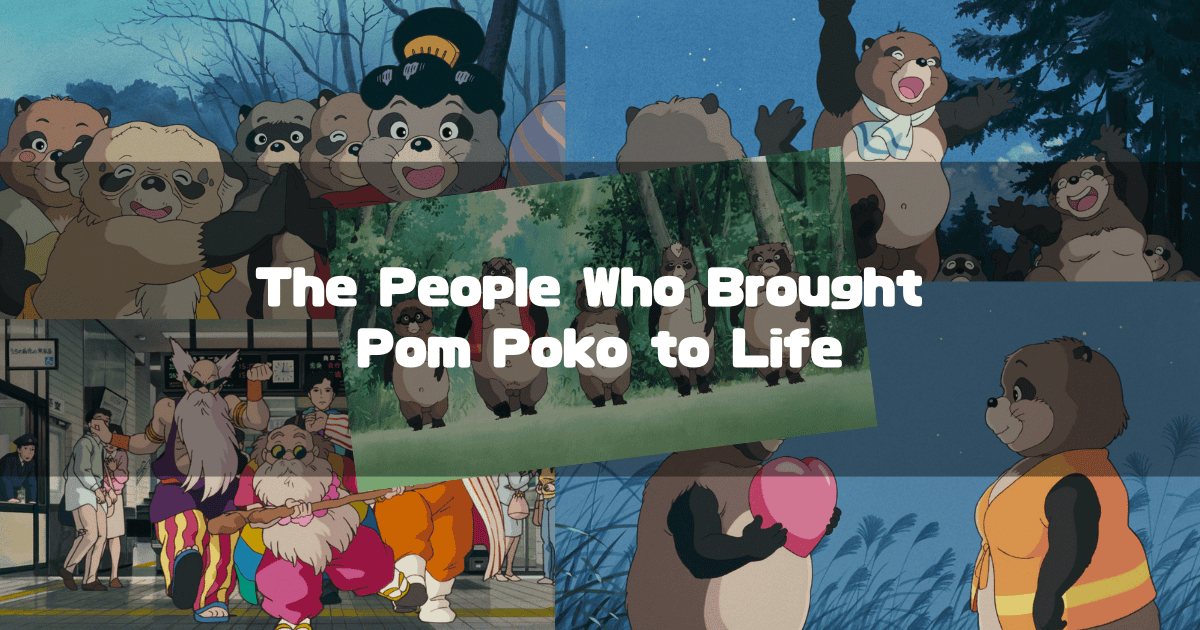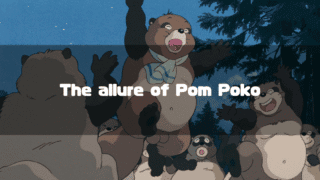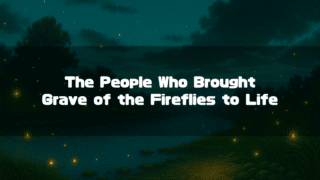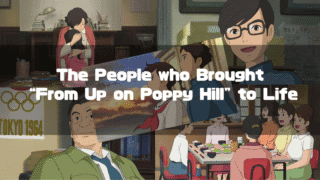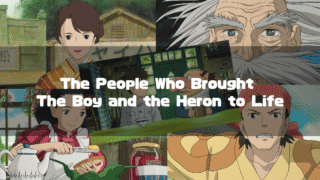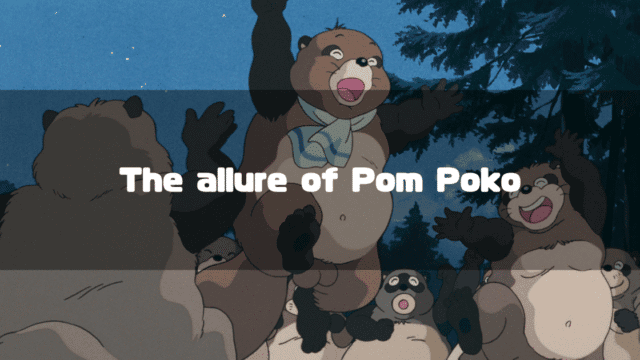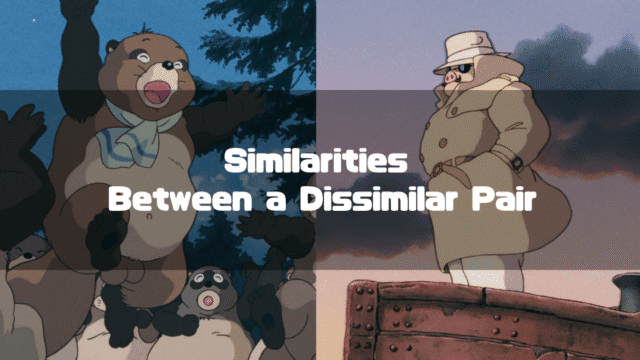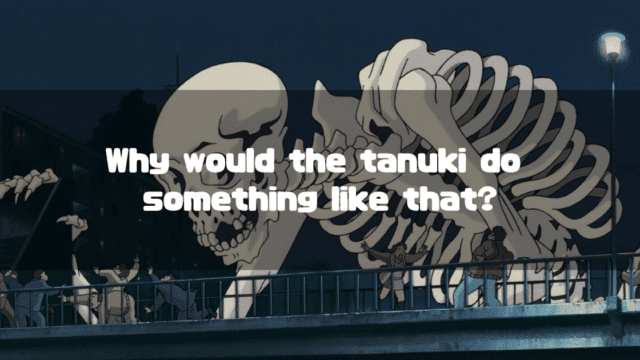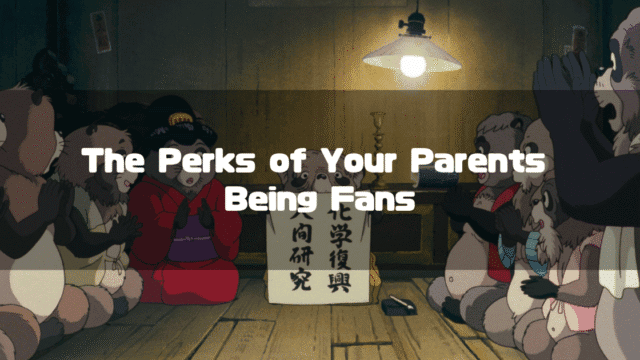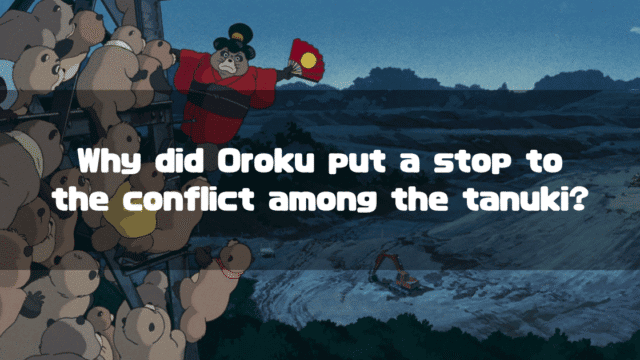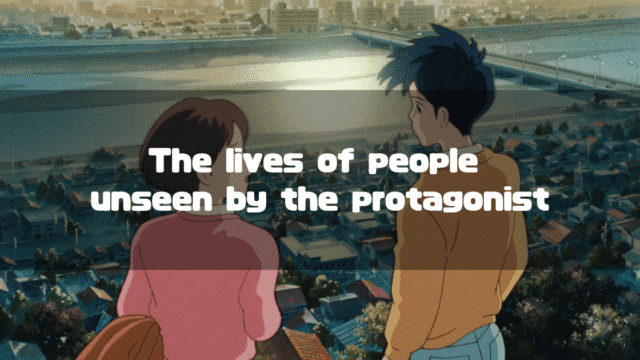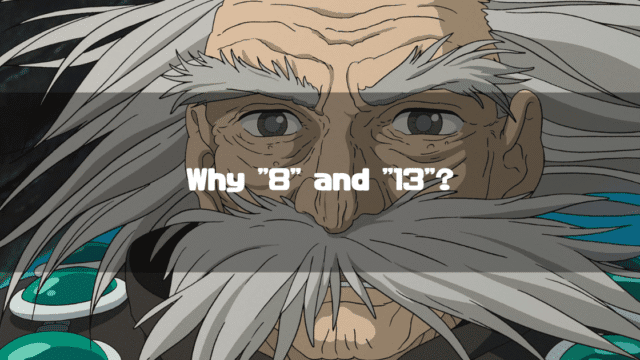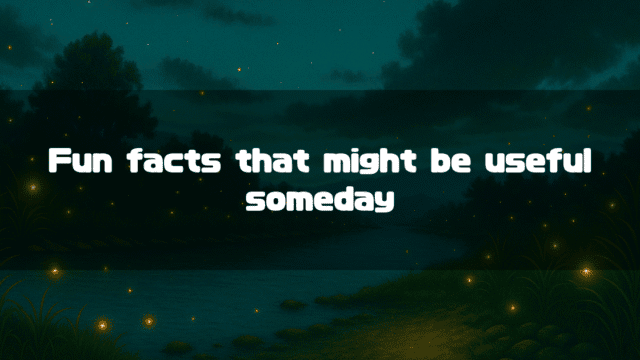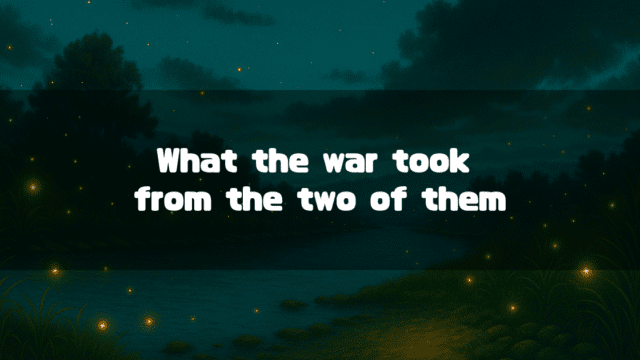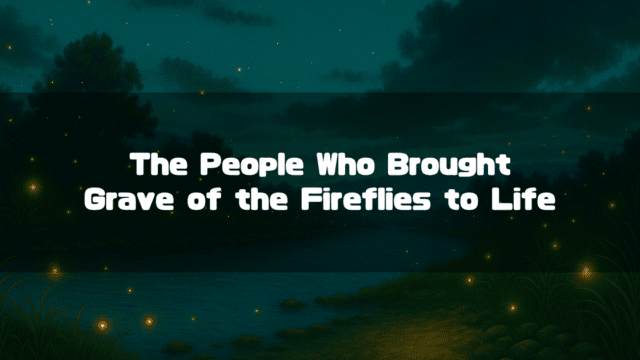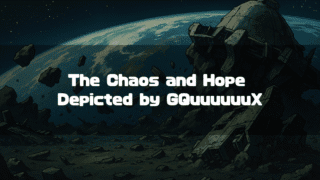Pom Poko(Official Studio Ghibli Website) is a 1994 animated feature film directed by Isao Takahata.
This time, I’d like to reflect on the characters and their voice actors from Pom Poko, considering their individual charms and stories. What kind of characters were in Pom Poko?
Please be aware that the following text contains unexpected spoilers.
*This article is an English translation of the original Japanese article, 【平成狸合戦ぽんぽこ】登場人物&声優情報一覧とキャラクター考察そして人物相関図.
Let an AI walk you through the highlights of this post in a simple, conversational style.
- Pom Poko (1994) Main Characters & Voice Actors List
- Pom Poko (1994) Character Map
- Pom Poko (1994) Character & Voice Actor Profiles and Analysis
- Narrator | Voice Actor: Maurice LaMarche
- Shokichi | Voice Actor: Jonathan Taylor Thomas
- Okiyo | Voice Actor: Jillian Bowen
- Tsurukame Oshō | Voice Actor: Andre Stojka
- Oroku | Voice Actor: Tress MacNeille
- Gonta | Voice Actor: Clancy Brown
- Seizaemon | Voice Actor: J. K. Simmons
- Ponkichi | Voice Actor: David Oliver Cohen
- Bunta | Voice Actor: Kevin Michael Richardson
- Tamasaburo | Voice Actor: Wally Kurth
- Kincho VI | Voice Actor: Brian George
- Yashimano Hage | Voice Actor: Brian George
- Inugami Gyobu | Voice Actor: Jess Harnell
- Ryutaro | Voice Actor: John DiMaggio
- Other Characters
Pom Poko (1994) Main Characters & Voice Actors List
| Name | Age | Voice Actor |
|---|---|---|
 Narrator | ? | Maurice LaMarche |
 Shokichi | ? | Jonathan Taylor Thomas |
 Okiyo | ? | Jillian Bowen |
 Tsurukame Oshō | 105 | Andre Stojka |
 Oroku | ? | Tress MacNeille |
 Gonta | ? | Clancy Brown |
 Seizaemon | ? | J. K. Simmons |
 Ponkichi | ? | David Oliver Cohen |
 Bunta | ? | Kevin Michael Richardson |
 Tamasaburo | ? | Wally Kurth |
 Kincho VI | ? | Brian George |
 Yashimano Hage | 999 | Brian George |
 Inugami Gyobu | 603 | Jess Harnell |
 Ryutaro | ? | John DiMaggio |
Pom Poko (1994) Character Map

Initially, the tanuki were in conflict with each other over territory, but under the guidance of the matriarch Oroku, they united to fight against the humans. The elders sent messengers (Tamasaburo and Bunta) to Shikoku and Sado, regions known as advanced centers for the “art of transformation” (bakegaku), to seek their aid.
Pom Poko (1994) Character & Voice Actor Profiles and Analysis
Narrator | Voice Actor: Maurice LaMarche
The narrator for the entirety of Pom Poko. The charming voice of Maurice LaMarche creates the fundamental “atmosphere” of this work.
The difficult story of challenging humans and ultimately being defeated is kept just barely watchable by the tanukis’ “foolishness” and “good nature,” and I feel that LaMarche’s voice also gently envelops this tough situation.
Also, the seamless transition from LaMarche’s voice to Jonathan Taylor Thomas’s voice reveals that it was actually Shokichi who was telling the story.
Shokichi | Voice Actor: Jonathan Taylor Thomas
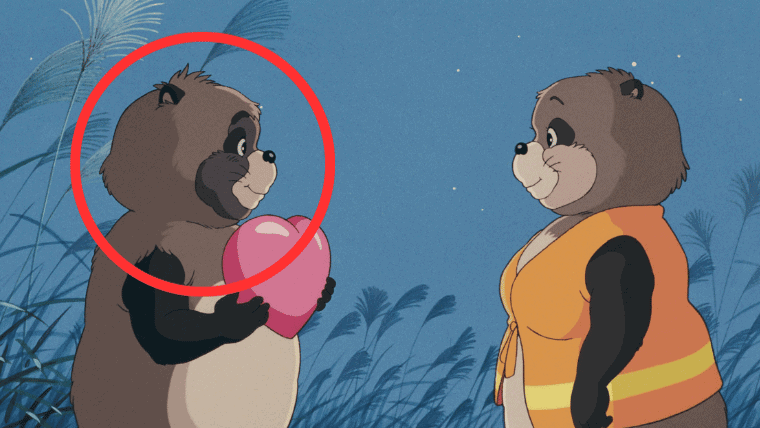
Shokichi’s Basic Information
The protagonist of the story. He is from Kagemori in Tama.
From the beginning of the story, he was extremely rational, and in the war against humans, he valued “human studies,” a teaching from his father, more than anyone else. However, his attitude was so consistent that Seizaemon called him “a human-like guy.”
Gonta was Shokichi’s polar opposite, but the one thing they shared was the awareness that “something must be done.”
And the most important structure of this story is that the hardliner Gonta appears more rational than the seemingly rational Shokichi. It’s hard not to empathize with Shokichi while watching the story.
This is a tricky aspect of Pom Poko, but the subtle discrepancy between our “objective view” as viewers and the tanukis’ “subjective view” plays an essential role.
That discrepancy is, of course, that we know the tanuki will lose, but the tanuki don’t know they will lose to us.
Because we know they are fighting a battle they can’t possibly win, Gonta’s attitude seems correct. In the end, Shokichi’s role in Pom Poko is to stand between that somewhat rational attitude and the “idealistic (dreamlike) victory” envisioned by the other tanuki, and to evaluate it objectively.
Even such a Shokichi ends up carrying out the “Twin Star Operation” for Okiyo, which shows his “tanuki-like” side and is perhaps his only endearing quality. Or perhaps his placing a glimmer of hope in the “Operation Specter” was also endearing.
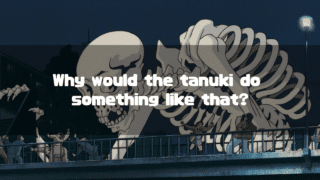
When you re-watch the story from this perspective of “endearingness,” the reason we can empathize with Gonta’s hardline stance seems to stem from the fact that it is his true feeling. In other words, we don’t know where Shokichi’s “true feelings” lie.
However, at the end of the story, the entire structure is turned upside down. It is revealed that Shokichi was the narrator of the story all along. Shokichi had been telling us his true feelings and thoughts the whole time.
In other words, we were fooled by Shokichi’s overly objective stance and his unreadable inner self.
One could say it was a classic Isao Takahata magic trick.
Okiyo | Voice Actor: Jillian Bowen
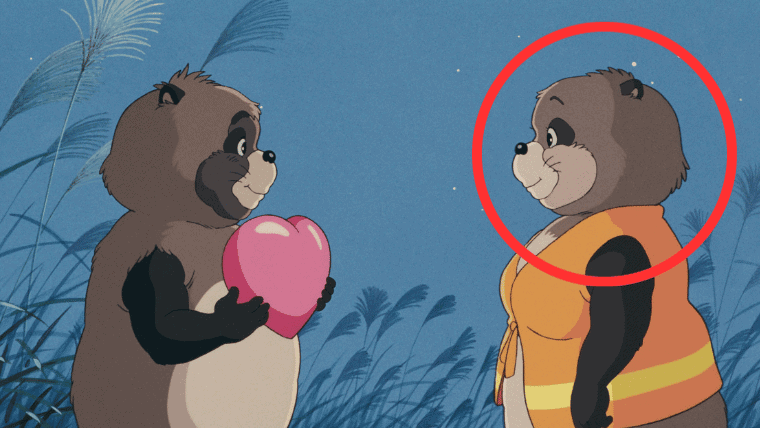
Okiyo’s Basic Information
She is from Mimikiri Mountain. Although she didn’t have many scenes, she carried out the “Twin Star Operation” with Shokichi, achieving some success.
Shokichi had doubts and anxieties about the plan he had devised, but he decided to execute it after Okiyo’s comment, “But it was such a wonderful idea.”
The basic stance of the hardliners like Gonta was to “make humans aware through death,” but Shokichi’s plan was to “make humans aware by showing them a miracle.” Perhaps the absence of human death was what made it “wonderful.”
While all the Tama tanuki participated in the “Operation Specter,” she is also unique in that she is the only female tanuki clearly depicted as participating in an individual operation in Pom Poko.
And including the “Operation Specter,” all operations in which female tanuki participated resulted in no human deaths. This point is also likely an expression of the irony or critical spirit of Pom Poko.
Tsurukame Oshō | Voice Actor: Andre Stojka
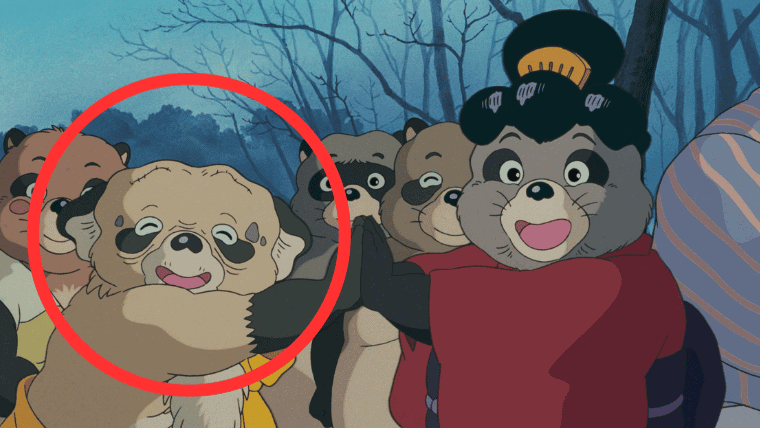
Tsurukame Oshō’s Basic Information
A priest who resides in “Manpuku-ji Temple,” which became the tanukis’ stronghold. He is 105 years old.
Despite being a tanuki, Tsurukame Oshō wears a priest’s robe and is called “Osh?” by the other tanuki. There’s a slight sense of incongruity that he, a non-human, is called “Osh?,” but this is explained later in the story when the situation of the Shikoku elders is depicted.
In other words, Tsurukame Oshō had served as the priest of Manpuku-ji Temple as a human for many years.
The Shikoku elder, particularly Kincho VI, was naturally at the shrine as a Shinto priest, and Tsurukame Oshō used to do the same thing.
Conversely, the days that Tsurukame Oshō enjoyed were the same days that Kincho VI is enjoying. In the past, many people visited Manpuku-ji Temple to listen to Tsurukame Oshō’s sermons.
Perhaps he intended to fool people as a priest in a deserted temple, but ended up working as a priest for a very long time.
What resonates here are the words Tsurukame Oshō uttered at the beginning of the story:
We tanuki are too nice. We get carried away. We provide too much service. That’s the root of our failure.
In other words, the Reverend failed because he provided too much service. What was “failure” for Tsurukame Oshō?
Could it be that he intended to fool humans as the priest of Manpuku-ji, but ended up living as a real priest?
I believe Tsurukame Oshō was the one who taught this failure to his younger tanuki while still searching for some “ideal conclusion.”
And when I think of such a Tsurukame Oshō, I am reminded of a being from another work: Moro from “Princess Mononoke.”
You might think it’s strange to think of that mysterious Moro when looking at the withered Tsurukame Oshō, but it makes perfect sense to me. I have summarized my thoughts on this point in the following article:

So, what do Tsurukame Oshō and Moro have in common?
Oroku | Voice Actor: Tress MacNeille
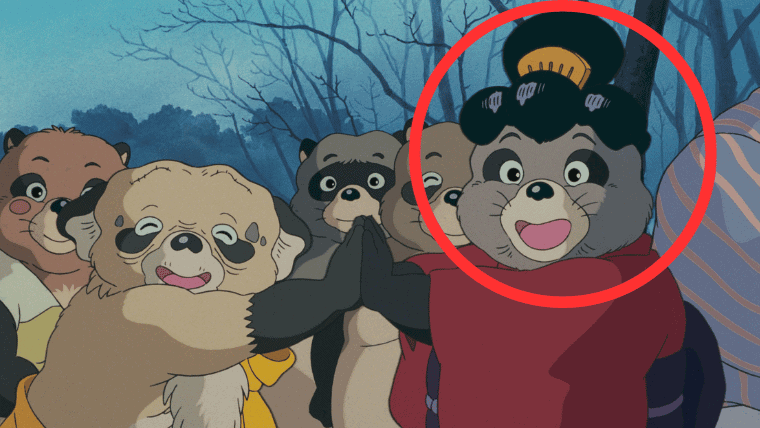
Oroku’s Basic Information
Also known as Oroku of the Fireball. It’s unclear if this nickname describes her nature or if she got it because she was good at transforming into a fireball, but she is the one who essentially propelled Pom Poko forward by making the feuding tanuki aware of the “humans.”
Although she seems a bit strict, she is generally caring and looked after the young tanuki.
Now, this Oroku says something strange in the main story. When Gonta and the others, who had mastered the basics of transformation, were about to carry out their first operation, she bestowed upon them a “secret art.”
According to Oroku’s explanation, it was a technique where “even if the operation fails, for five days, the tanuki’s corpse will not look like a tanuki, but like a fox.”
What we should remember here is that at the end of the story, when the “Tsurube-otoshi” (a type of monster) that Gonta and the others transformed into is hit by a truck, the transformation is broken and they revert to their tanuki forms.
So, transformation magic does indeed break upon death.
In that case, a technique that doesn’t break even after death is truly a “secret art” and is exceptionally extraordinary even among the already extraordinary transformation arts.
However, I personally believe this “secret art” has its own secret, and I think it’s a cunningly concealed “dirty joke.” I’ve summarized my thoughts on that in the following article:
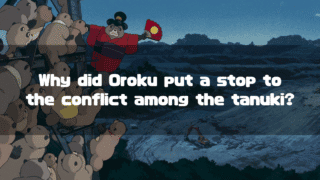
What do you all think the secret art bestowed by Oroku was?
Gonta | Voice Actor: Clancy Brown
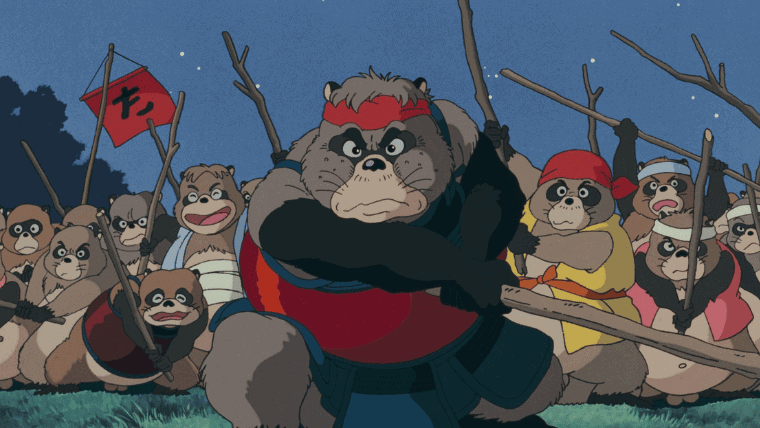
Gonta’s Basic Information
He is from Takagamori. Throughout the main story, he maintained a hardline stance against humans. Even Gonta couldn’t resist the charm of alluring foods created by humans like “hamburgers,” “donuts,” and “fried chicken,” and decided to “leave a few humans alive.” He, too, was a carefree tanuki after all.
Also, an important feature of Pom Poko is that the actions of the hardliner Gonta, who tries to exterminate us humans, seem the most rational.
The reason for this lies in the documentary-like nature of this work. In other words, this work is not a sweet story that ends with “and so the tanuki won,” or “thus, humans and tanuki decided to live hand in hand,” but rather, it stems from the fact that it is a serious story of “and so the tanuki lost.”
We watch their journey to defeat knowing that the tanuki will lose no matter what they do, which is why Gonta, who takes the approach of killing and reducing the human population, seems the most rational. After all, they’re going to lose no matter what they do.
In the end, Pom Poko is likely a “story of defeat.” When we lose a match, we tend to fall into “what if” thinking like “I lost because I did this” or “I could have won if I did that,” but in reality, the answer in most cases is that we lost because the situation was unwinnable no matter how hard we struggled. I’ve summarized my thoughts on that in the following article:

If this story hadn’t been depicted with “tanuki,” it would have been a truly painful movie.
Seizaemon | Voice Actor: J. K. Simmons
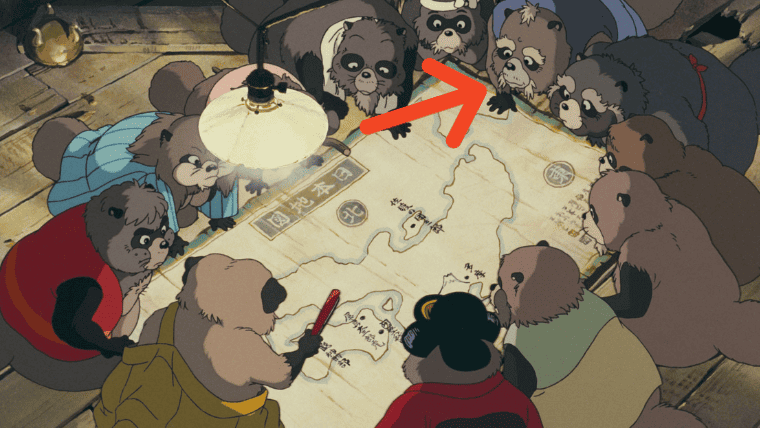
Seizaemon’s Basic Information
An elder from Suzugamori, and the commander-in-chief of the “Blue Army” when they were fighting divided into the “Blue Army” and “Red Army” at the start of the story.
Unlike Gonta, who was the commander-in-chief of the “Red Army,” he did not show a particularly hardline stance during the story and, like the other tanuki, took a cautious (wait-and-see) attitude.
At the end of the story, Seizaemon was among the group that decided to live disguised as humans. It was he who succeeded in the real estate business and calmly carried out urban development.
Ponkichi | Voice Actor: David Oliver Cohen
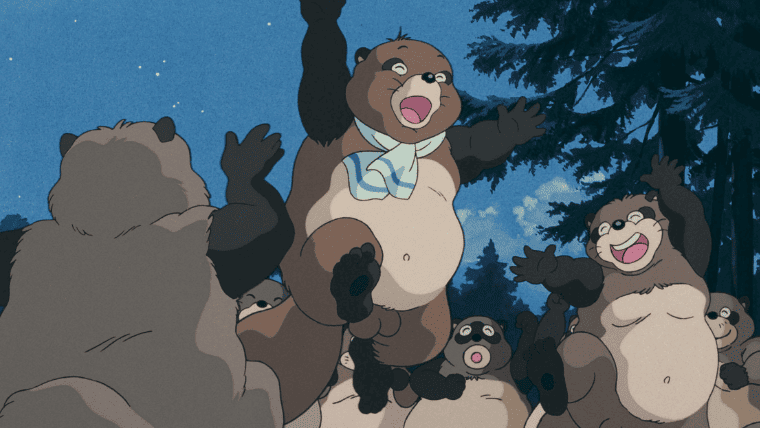
Ponkichi’s Basic Information
Shokichi’s childhood friend. In contrast to Shokichi, who diligently studied “transformation chemistry,” he simply tried to live like a tanuki.
He ended up living as an ordinary tanuki who couldn’t transform, but he didn’t seem to have the diligence to join the “Odori Nenbutsu” (dancing prayer) cult founded by the Bald Tanuki, nor did he commit mass suicide with them on the treasure ship.
At the end of the story, he reunites with Shokichi, and perhaps his figure, living as himself no matter how the surrounding situation changed, was the true meaning of “still alive and kicking.”
I discuss this in more detail in the following article, connecting it to “Porco Rosso”:

What kind of existence was Ponkichi in Pom Poko?
Bunta | Voice Actor: Kevin Michael Richardson
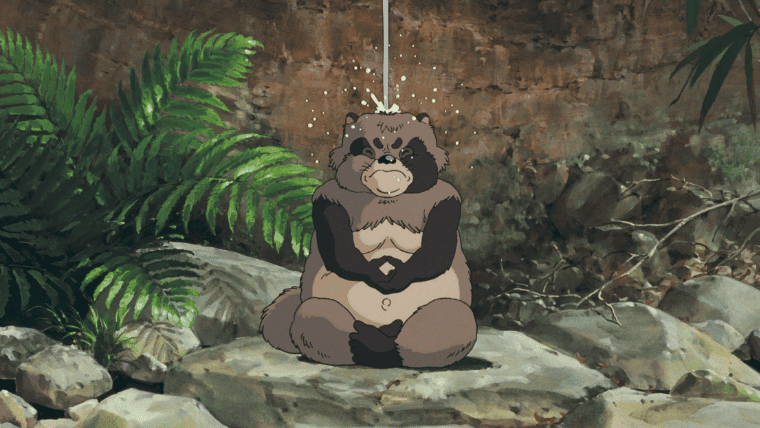
Bunta’s Basic Information
Raised in Mizunomi-sawa. He sets off for Sado quite early in the story to recruit Master Danzaburo-danuki.
He knew nothing of the Tama tanukis’ enthusiasm for the “Operation Specter,” their despair at its failure, or the subsequent chaos, as he diligently searched for Master Danzaburo. Considering the uselessness of the Shikoku elders, I really wanted him to meet Master Danzaburo, but it turns out he had passed away shortly after the war.
The scenery Bunta sees upon returning to Tama with this fact in his heart is the result of the development that has been depicted throughout the work, yet it startles even us viewers.
I think Bunta’s final job, having diligently tried to fulfill his mission away from his comrades, was to bring us, the viewers, back to reality.
Tamasaburo | Voice Actor: Wally Kurth
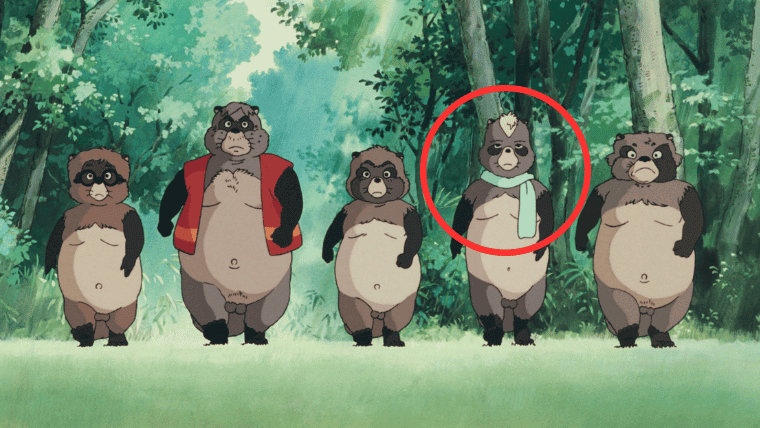
Tamasaburo’s Basic Information
A tanuki living in Onigamori. A so-called handsome man popular with the female tanuki. After winning a fierce rock-paper-scissors battle, he headed to Shikoku to recruit the elders.
While Bunta diligently searched for Master Danzaburo without starting a family, Tamasaburo, after barely reaching Shikoku, fell in love with Koharu, the beloved daughter of the Great Deity Kincho, and had three cubs.
Nevertheless, the secret plan brought by the three elders from Shikoku, whom he risked his life to recruit, was the completely useless “Operation Specter.” Did Tamasaburo have any worries, having seen the other elders in Shikoku? Did he wonder if such carefree folks would be of any use?
But perhaps not thinking that way is also a good thing about tanuki.
The handsome man of Tama was, after all, still a tanuki.
Kincho VI | Voice Actor: Brian George
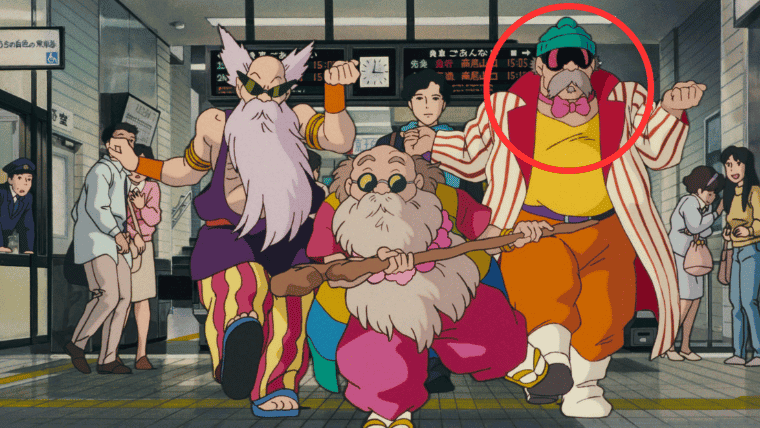
Kincho VI’s Basic Information
The Shinto priest of the Great Deity Kincho in Tokushima Prefecture. Despite being a tanuki, he serves as a priest while transformed into a human. In other words, at least Kincho VI was effectively living the life that the Tama tanuki ultimately chose: “to live as humans.”
And yet, he was greatly surprised when the fox proposed the idea of “living as humans.”
What does this mean?
Probably, Kincho VI (and the other Shikoku elders) had no awareness of living as humans at all, and believed they had been fooling humans all along, right up to the present day.
On the other hand, Ryutaro’s proposal to “live as humans” likely assumed a life as a salaryman, shaken by the morning commuter train, rather than living in a slightly lofty position like a “Shinto priest,” so the situation is a bit different, but essentially the same thing.
This lack of awareness and carelessness was probably the tanuki-like part of Kincho VI.
Yashimano Hage | Voice Actor: Brian George
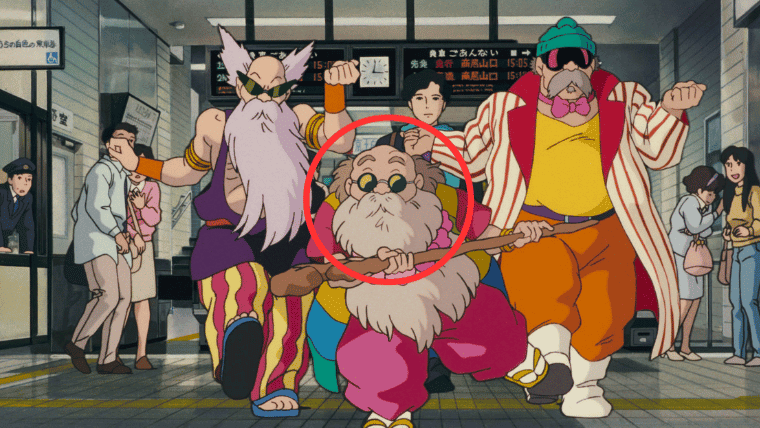
Yashimano Hage’s Basic Information
His real name is Joganji Tasaburo. A bald tanuki said to have seen “Nasu no Yoichi” in his youth. He celebrated his 999th birthday in the main story.
One of the three elders whom Tamasaburo risked his life to recruit, he also sincerely believed in the success of the “Operation Specter.”
However, perhaps due to his old age, or perhaps thinking it was his final service, he settled into the role of the leader of the “Odori Nenbutsu” (dancing prayer) cult, which he likely saw in his youth, and became a spiritual support for the weakest tanuki who couldn’t transform.
One would have wished for him to guide those tanuki with his cunning ideas, but the choice they made was mass suicide (a journey to death on a treasure ship).
In a way, Yashimano Hage might have been the most pessimistic being to appear in Pom Poko. And he probably no longer had the strength to “keep on living.”
Inugami Gyobu | Voice Actor: Jess Harnell
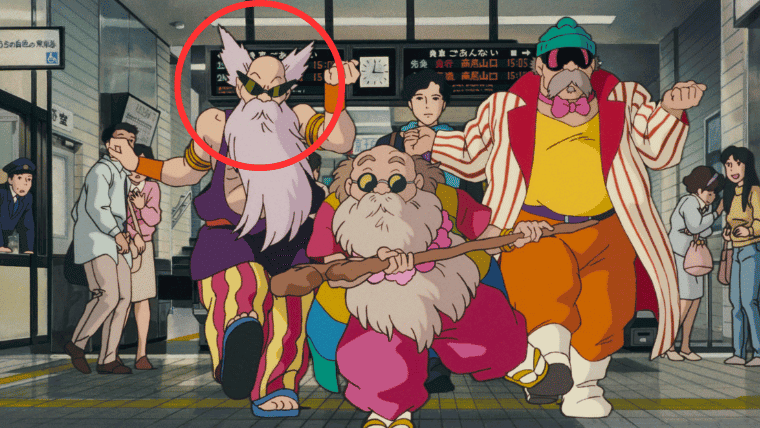
Inugami Gyobu’s Basic Information
Leader of the 808 tanuki of Matsuyama. Age 603.
He was one of the three elders from Shikoku recruited by Tamasaburo, but he had a clearly more fearsome appearance than the other two.
What must not be forgotten about him is the passage in Kincho VI’s eulogy: “Gyobu, having been caught up in a family feud in the Matsuyama domain in the past, regretted siding with the villains, which led to the downfall of his clan…”
The family feud he was involved in is the one told in the “Tale of the 808 Tanuki of the Matsuyama Disturbance.”
Originally, “Gyobu” was a “name” given to him by the lord of Matsuyama Castle, and he was an object of faith for the castle’s retainers. However, when that family feud occurred, he regretted having sided with the rebellious faction.
In other words, his regret stemmed from a sorrow related to his involvement with humans.
That is why, I believe, he came to Tama this time solely for the sake of the tanuki, but the result was disastrous.
In a way, it might be said that it was a blessing he passed away without seeing that conclusion. He must have been thinking, “This time for sure!”
Ryutaro | Voice Actor: John DiMaggio
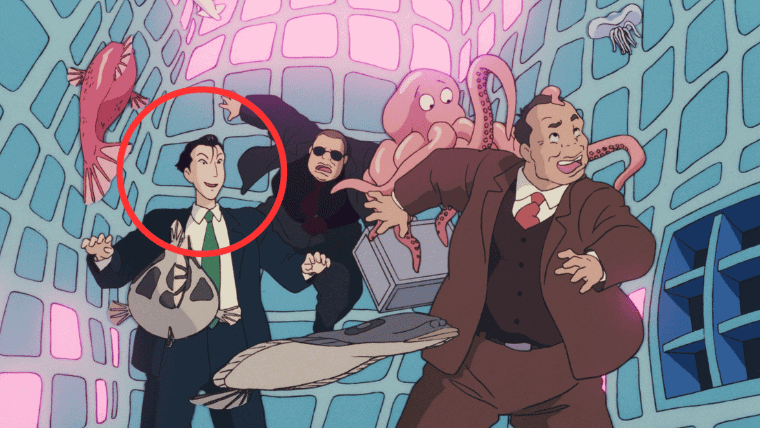
Ryutaro’s Basic Information
A transformation fox from Hori-no-uchi in Tama. Immediately after the “Operation Specter” failed, he appeared before Kincho VI and gave the tanuki the option to “live as humans.”
He played an extremely essential role in the story of Pom Poko, but the most important thing is the fact that he made this offer to Kincho VI.
Ryutaro probably knew that Kincho VI was already living the same life as them, and just hadn’t realized it.
But the biggest question is, why did he give the option to “live as humans” to the tanuki, who were not even his own kind?
When you start to think about this, all sorts of tragedies come to mind, which is tough, but the most probable speculation is that the foxes of Tama also carried out a “Operation Specter.”
Just as we didn’t notice the tanukis’ “Operation Specter,” we didn’t notice the foxes’ “Operation Specter,” and in fact, the tanuki might not have noticed either. Because they were such different beings.
What were Ryutaro’s feelings when he made the proposal to the tanuki to “live as humans”?
One possibility is that he gave them a piece of advice not as “kin,” but as “kindred spirits.” But considering the difficulties of “living as humans,” it might have been his way of saying, “This is your punishment for not joining our fight!”
And at the end of the story, Ponkichi, as a representative of those who absolutely could not have done the “Operation Specter,” said a word.
It really seems like the foxes must have done a “Operation Specter” too.
What do you all think?
Other Characters
- Sasuke | Voice Actor: Marc Donato
- Otama (Gonta’s wife) | Voice Actor: Russi Taylor
- Koharu (Kincho VI’s daughter) | Voice Actor: Olivia d’Abo
- Newscaster | Mark Moseley
- Reporter | Mark Moseley
The images used in this article are from the “Studio Ghibli Still Images” collection.
About the Author
Recent Posts
- 2025-10-15
Indiana Jones and the Dial of Destiny(2023):Historical Background-WWII, the Real Dr. Schmidt, the Siege of Syracuse, and the Antikythera Mechanism - 2025-10-08
Why Does Children Who Chase Lost Voices Feel So Ghibli-esque? [Makoto Shinkai’s “Tale of Farewell”] - 2025-10-07
5 Centimeters per Second: Characters, Voice Actors, Character Analysis and Character Map - 2025-10-06
5 Centimeters per Second: Full Synopsis, Analysis, Ending Explained & Character Map (Spoilers) - 2025-10-04
5 Centimeters per Second Is Neither Depressing Nor Terrible: A Positive Interpretation of the Film

